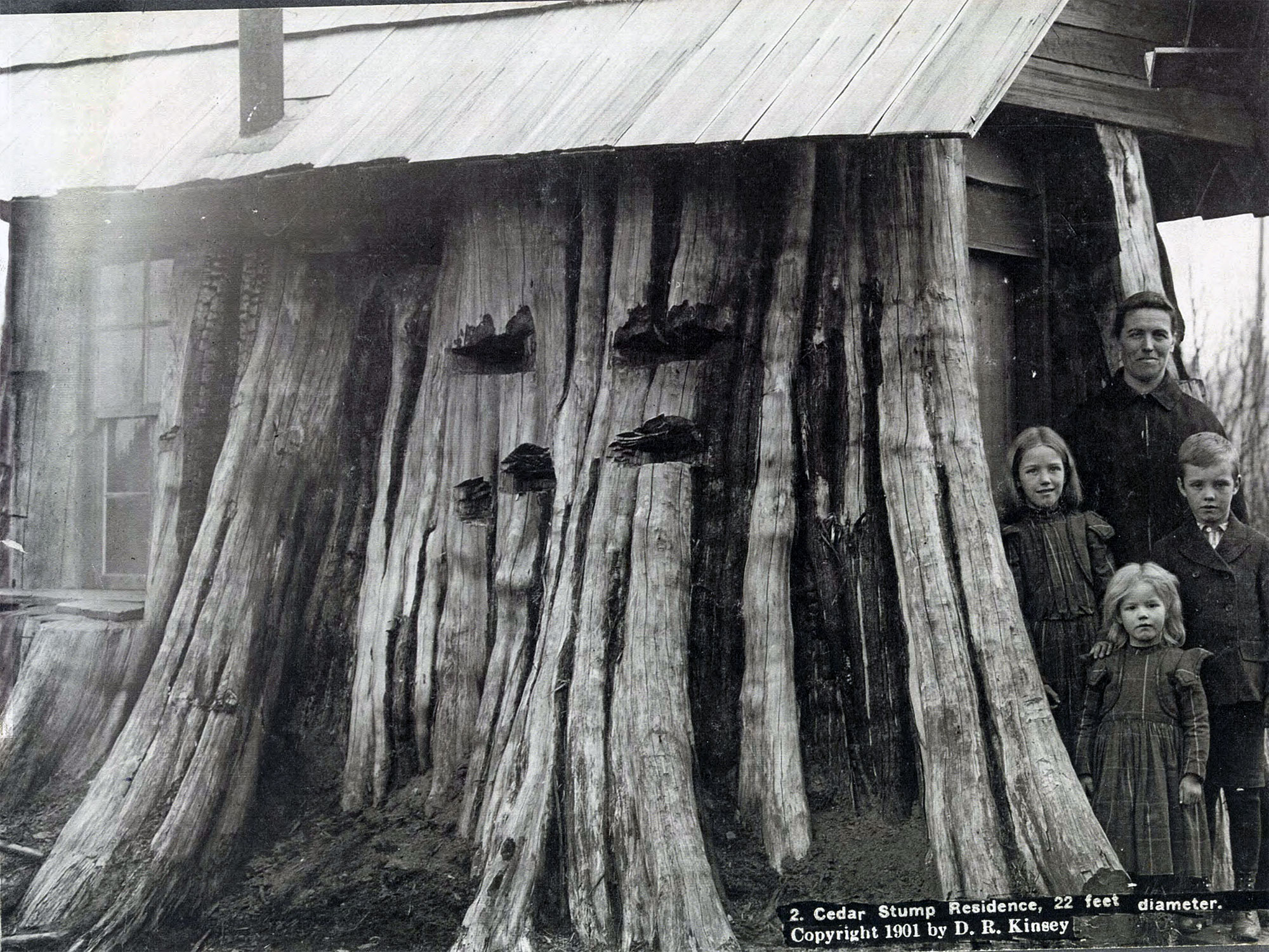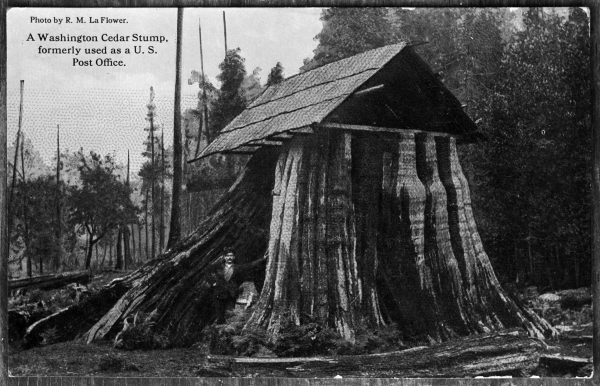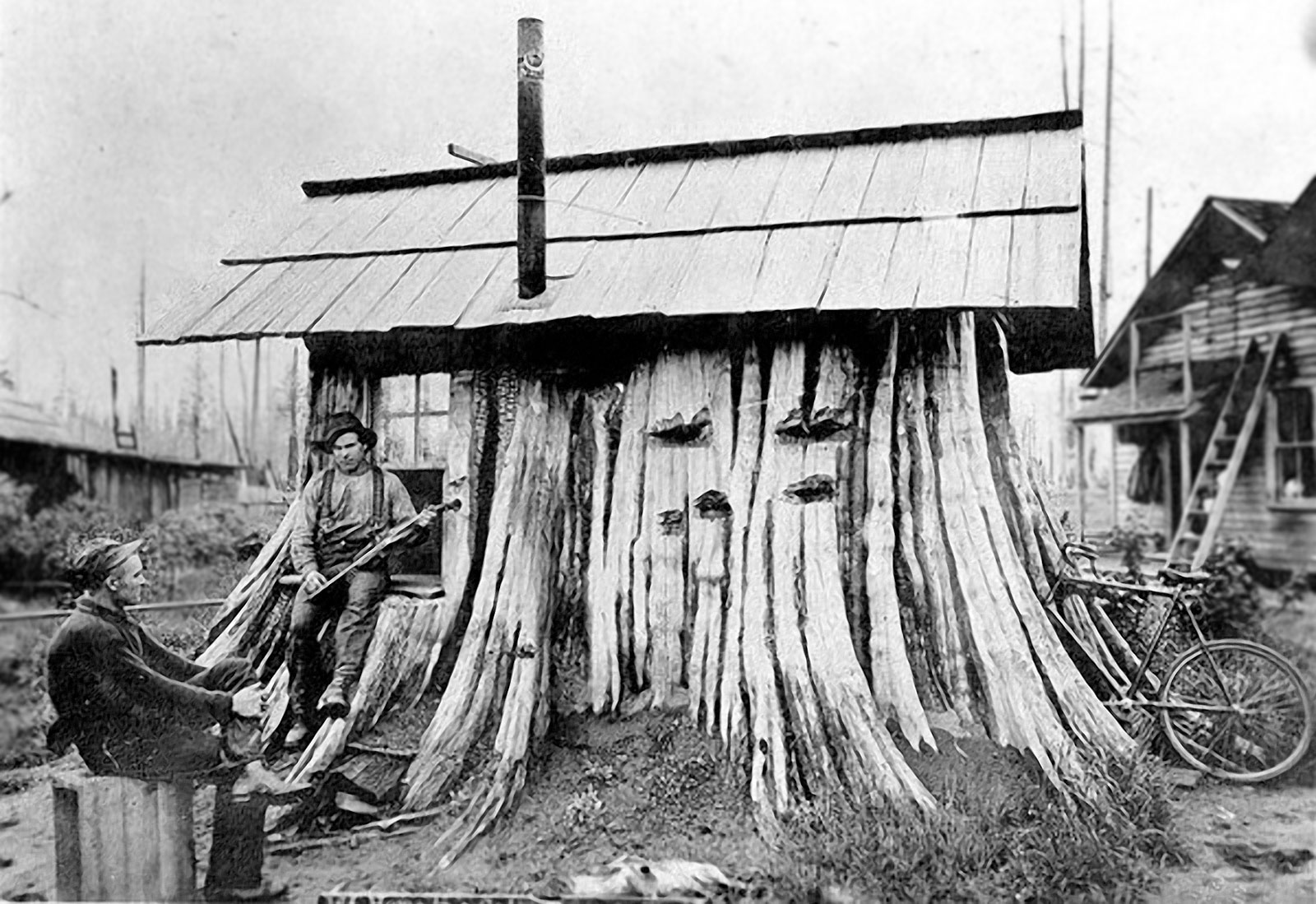Live in a Tree Stump!

Money is tight for the great majority of people right now. If renting an apartment is not for you, and you want a small house for less than $40k, then chances are its going to be a so-called tiny house. These are typically 50 to 400 square feet and most often use a compost or chemical toilet (or, god forbid the smell, an incinerator toilet).
 Here (right) is a photo of a typical tiny house from Wikipedia.
Here (right) is a photo of a typical tiny house from Wikipedia.
People think this is a new thing. While the reason people may be building and living in houses the size of a single room in a home may vary (I want to downsize, I can make do with less, Who can afford a regular size house? My wife and kids drive me nuts!), the fact is that people have been living in eensy-weensy domiciles for hundreds of years.
I suppose we could start with the cave, and the caveman and woman, but thats silly. They didnt even know about toilet paper.
In the 1800s, as the migration toward the western part of the U.S. began in earnest:
As the first waves of loggers swept over great portions of the Pacific Northwest's old-growth forests in the second half of the nineteenth century, those men opened up the dark dense woodlands to settlement. . Left behind was a scarred landscape, scrap wood, and stumps. Many stumps. Huge stumps. Stumps that still stood a full 10 feet high but were undesirable as lumber because they tended to swell down toward their base, making the wood-grain uneven.
When subsequent waves of pioneer settlers came on through, they found those old logging sites to be welcome clearings that hinted at possible futures as rich farmland. But, being littered with debrisand those towering stumpsthese homesteads presented the challenge of years' worth of hard labor just to clear (by burning and digging-out stumps) enough proper space to plant orchards or raise crops or livestock.
For select stumps would-be farmers found other uses By constructing roofs on them and attaching a door or gate the stump-based shelters worked fine as storage sheds or chicken houses, or pens to keep pigs and calves safe from prowling predators including raccoons, bobcats, or bears. And sometimes it was people who were the denizens of these stump houses.

As early as 1847 the pioneering McAllister family moved northward to the Medicine Creek area (near Nisqually). It was there that they set up shelter by hollowing out a stump and making a Home Sweet Home there until they could erect a proper house. After that, the structure served them as a barn.
Later, on June 20, 1892, a William D. McDonald opened up the very first U.S. Post Office located in the remote northern portion of the Olympic Peninsula. The McDonald Post Office was located at a site 10 miles southwest of Port Angeles, and on the east side of the Elwha River. It was located in a large roofed stump. In time the house was sold, moved, renamed the Elwha Post Office. Today the aging icon still stands.
But the most famous of all local stump houses was one located on the Lennstrom family's property in Snohomish County's Stillaguamish Valley, in the tiny community of Edgecomb, which is currently a neighborhood within the old logging and railroad town of Arlington.
It was likely in 1901 that the first of many curious visitors toting a camera arrived and documented the stump house in photographs. The Northwest's famed photographer, Darius Kinsey (1869-1945), brought four cameras (of different formats) and took eight classic shots. Over the ensuing two decades they were marketed as postcards and stereoview cards and helped establish the stump house as a regional icon. Kinsey himself liked the stump house so well that by March 1902, he was using a small image of it on his company's business stationery. (more…)
Original Link: http://feeds.boingboing.net/~r/boingboing/iBag/~3/-G917pHgkyg/live-in-a-tree-stump.html



